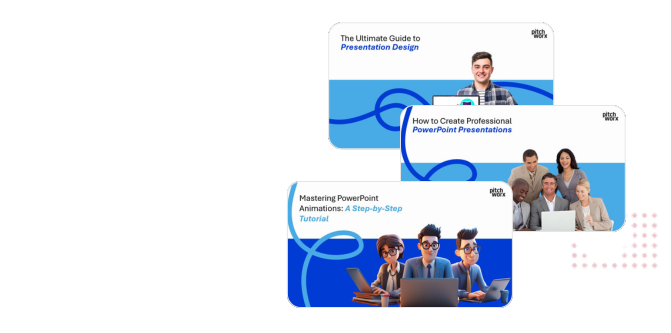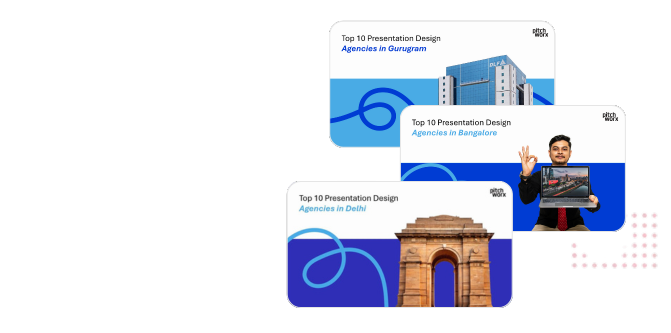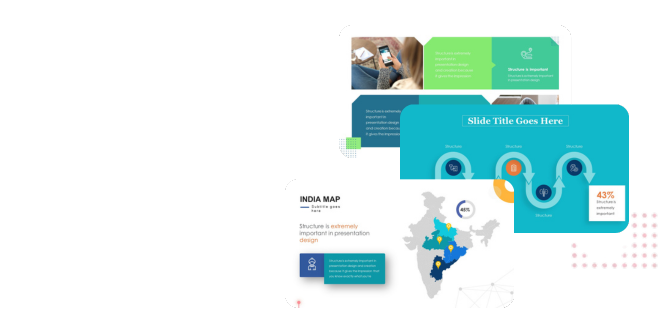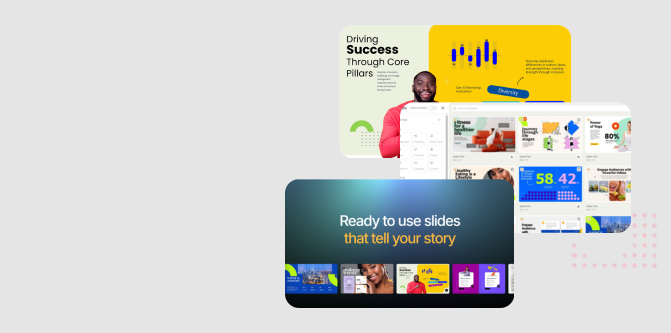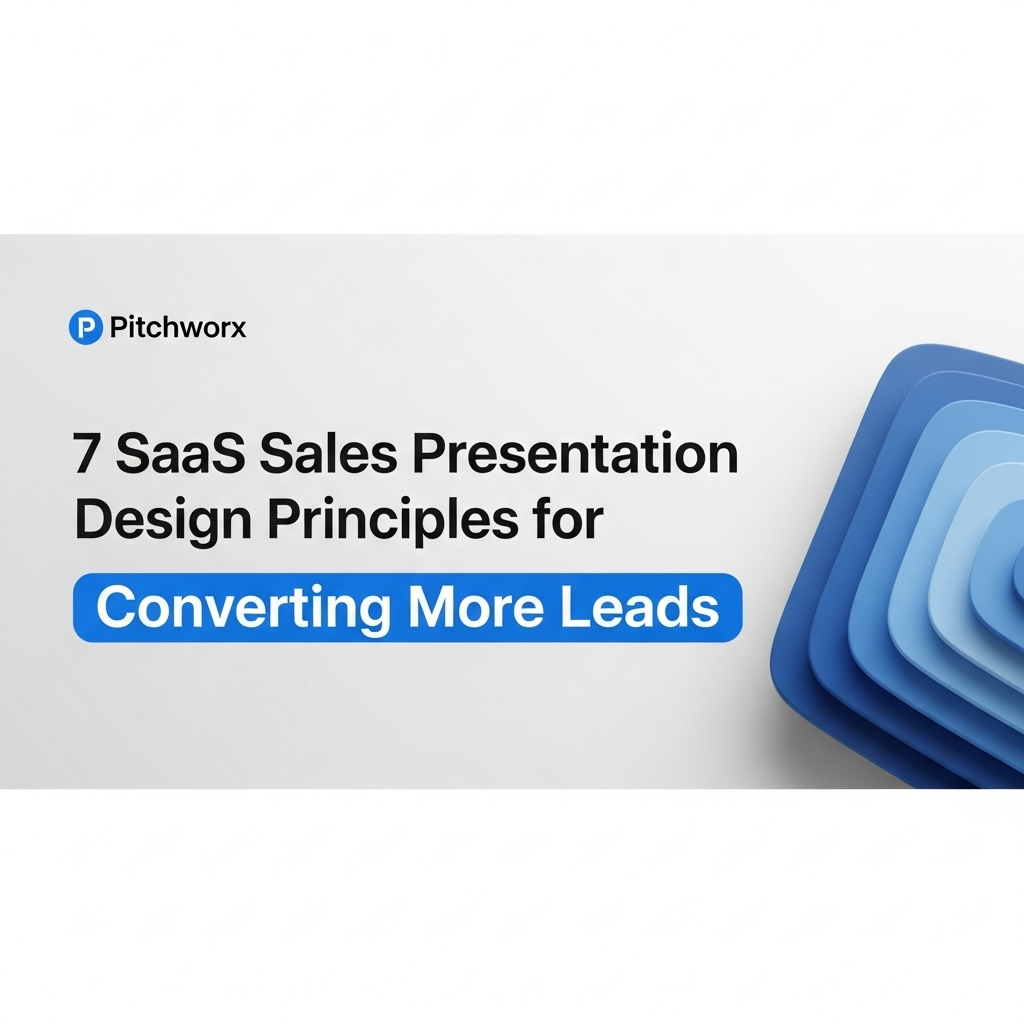Your SaaS product is brilliant. It solves a genuine problem, the code is elegant, and the UI is intuitive. Yet, in sales meetings, you see eyes glaze over. Prospects nod politely but you lose the deal to a competitor with an inferior product but a better story. This is a common narrative in the tech world. The culprit is often not the product, but the presentation. Effective SaaS sales presentation design is the bridge between complex technical functionality and clear customer value. It’s about transforming a list of features into a compelling story that resonates, persuades, and ultimately, converts. In our experience working with global tech companies, the shift from a product-centric dump to a customer-centric narrative is the single most important factor in sales success.
Quick Answer
SaaS sales presentation design is the strategic process of structuring and visualizing a narrative that translates complex software features into clear, persuasive business outcomes for potential customers. With 77% of B2B buyers finding their recent purchase experience complex according to a Gartner study, simplifying the message is critical. Success hinges on three key actions:
- Focusing on the customer’s problem before introducing the solution.
- Framing every feature as a direct benefit or solution to that problem.
- Using a clear visual hierarchy and storytelling to guide the buyer to a decision.
Table of Contents
- The Core Problem: Why Most SaaS Sales Decks Fail
- Unpacking the Root Causes of Ineffective Presentations
- The Solution: A Story-First Framework for Clarity and Conversion
- 7 Principles for Building Your SaaS Sales Narrative
- Measuring the ROI of a Well-Designed Sales Presentation
- Frequently Asked Questions
- Your Next Step Towards Clearer Communication
The Core Problem: Why Most SaaS Sales Decks Fail
The fundamental failure of most SaaS sales presentations isn’t a lack of information; it’s an overabundance of the wrong kind. We call this the “Curse of Knowledge.” Internal teams are so intimately familiar with their product’s architecture, features, and capabilities that they forget what it’s like to see it for the first time. They present from their perspective, not the customer’s. This leads to three critical breakdowns in communication.
1. The Feature Frenzy
The most common pitfall is a slide-by-slide tour of every feature the product has. The presenter proudly showcases the ‘what’—”Our dashboard has 15 customizable widgets,” “We integrate with 50 different APIs.” Meanwhile, the prospect is silently wondering the ‘why’—”Why do I care? How does this make my job easier or my business more profitable?” A list of features is not a value proposition. It’s a spec sheet that forces the customer to do the hard work of connecting functionality to their own business problems.
2. The Missing Narrative Arc
A collection of slides, no matter how beautifully designed, does not automatically form a presentation. It’s just a pile of information. A successful presentation has a narrative arc: a beginning (the problem), a middle (the transformation), and an end (the resolution). It introduces a hero (the customer), a villain (their business challenge), and a magical guide with a powerful tool (your company and your SaaS). Without this story, the audience has no context, no emotional investment, and no clear path to follow.
3. The One-Size-Fits-All Deck
Many sales teams operate with a single, monolithic deck. The same presentation is used for a C-level executive, a technical manager, and an end-user. This is profoundly inefficient. The CFO cares about ROI and TCO, the IT manager cares about security and integration, and the daily user cares about workflow efficiency. Presenting a generic deck signals that you haven’t done your homework and aren’t focused on their specific needs, which immediately erodes trust and engagement.
Unpacking the Root Causes of Ineffective Presentations
Understanding why these problems exist is the first step toward solving them. In our 13+ years of designing presentations, we’ve seen these patterns emerge across SaaS companies of all sizes, from startups to enterprise giants. The issues are rarely about a lack of effort; they’re about a misaligned perspective.
- Founder-Led Selling Myopia: In the early days, technically-minded founders often lead sales. Their passion is for the product’s ingenuity and the elegance of its code. They sell the “how” because it’s what they’re proudest of. This DNA gets baked into the company’s sales culture, long after a dedicated sales team is in place.
- The “Demo” as a Crutch: The default action for many SaaS salespeople is to “just show the product.” The live demo becomes the presentation. While a demo is essential, leading with it without first establishing context and value is like a doctor prescribing medication before diagnosing the illness. It puts the entire burden of understanding on the prospect.
- Internal Misalignment: Often, the sales deck is a patchwork quilt of slides from different departments. Marketing adds branding slides, Product adds feature release slides, and Sales adds pricing slides. The result is a disjointed document with no single, coherent voice or message. It reflects the company’s internal structure, not the customer’s needs.
About PitchWorx
With 13+ years of presentation design experience and 150,000+ slides created, PitchWorx is an ISO 27001 certified agency trusted by Fortune 500 companies. Our expertise in crafting compelling narratives for complex industries helps businesses in global markets turn prospects into partners.
The Solution: A Story-First Framework for Clarity and Conversion
The antidote to complexity is a simple, powerful story. Shifting your approach from “what our product does” to “what our customer can achieve” is transformative. This isn’t about dumbing down your product; it’s about elevating the conversation from features to outcomes. A story provides context, creates an emotional connection, and makes your solution memorable long after the meeting ends. At PitchWorx, we build our services for building winning sales presentations around a core narrative framework that puts the customer at the center of the universe.
This framework re-orients the entire presentation. Instead of starting with a slide about your company’s founding date, you start with a slide that articulates a deep understanding of the customer’s world and their most pressing challenge. Every subsequent slide must earn its place by advancing that story. If a slide doesn’t help the customer on their journey from problem to resolution, it doesn’t belong in the deck.
| Aspect | Traditional Feature-Dump Deck | Story-Driven Narrative Deck |
|---|---|---|
| Opening | “About Us,” Company History, Office Locations | “The World of Our Customer,” The Core Problem, The Cost of Inaction |
| Product Introduction | A list of all features and technical specifications | The “Promised Land” – a vision of the future state after solving the problem |
| Core Content | Screenshots with callouts for every button and menu | Three core pillars of value, each linking a feature to a specific benefit and outcome |
| Call to Action | “Any Questions?” followed by pricing | A clear, logical next step in the evaluation process (e.g., a tailored demo) |
7 Principles for Building Your SaaS Sales Narrative
Adopting a story-first approach requires a disciplined process. It’s about making strategic choices to prioritize clarity over comprehensiveness. Here are seven principles our team uses to design SaaS sales presentations that convert.
Principle 1: Nail the Antagonist
Before you talk about your solution, you must vividly and empathetically describe the problem. What is the business pain the prospect is experiencing? Quantify it. What is it costing them in time, money, or opportunity? A well-defined antagonist (the problem) makes the protagonist (your solution) more heroic.
Principle 2: Sell the Outcome, Not the Task
Your software enables users to perform tasks. But customers don’t buy tasks; they buy outcomes. Don’t sell “a reporting dashboard.” Sell “the ability to make data-driven decisions in minutes, not hours.” Always connect the feature (the task) to the benefit (the immediate value) and the outcome (the strategic business impact).
Principle 3: One Idea Per Slide
Cognitive load is the enemy of persuasion. When a prospect is faced with a dense slide filled with text and multiple charts, they will either try to read it (and stop listening to you) or ignore it completely. Enforce a strict “one idea per slide” rule. Use a strong headline to state the idea, and use the body of the slide to visually support it. Nothing more.
Principle 4: Show, Don’t Just Tell
Instead of using bullet points to describe a workflow, use simplified, clean UI mockups to show it. Instead of listing customer names, show their logos and a powerful one-sentence testimonial. Visuals are processed faster and are more memorable than text. Great SaaS sales presentation design prioritizes visual evidence over written claims.
Principle 5: Structure with “The Rule of Three”
Humans are wired to remember things in groups of three. After you’ve set up the problem, structure your solution around three core pillars of value. “Our platform helps you solve this by 1) automating X, 2) integrating Y, and 3) providing insights on Z.” This creates a simple, memorable structure that the audience can easily recall and repeat to their colleagues.
Principle 6: Use Analogies and Metaphors
For truly complex or abstract technical concepts, an analogy is the most powerful tool for creating understanding. Is your security protocol like a bank vault, a digital fortress, or a personal bodyguard? Each metaphor creates a different mental image and simplifies a potentially dry topic into something relatable and understandable.
Principle 7: End with a Clear Next Step
The final slides of your presentation are critical. Don’t end on a generic “Questions?” slide. The goal is to maintain momentum. Your final slide should clearly and confidently outline the next step in the process. This could be scheduling a deep-dive demo tailored to their use case, initiating a proof of concept, or a proposal review. Be specific and make it easy for them to say yes.
Measuring the ROI of a Well-Designed Sales Presentation
Investing in professional SaaS sales presentation design isn’t a cost; it’s a strategic investment in your revenue engine. But how do you measure the return? While direct attribution can be challenging, you can track several key performance indicators that demonstrate the impact of clearer, more persuasive communication.
LEADING INDICATOR
Higher Meeting Engagement
Are prospects asking more strategic questions instead of clarifying questions? Is the conversation more interactive? This is a sign of deeper understanding.
PIPELINE INDICATOR
Increased Sales Velocity
A clear story accelerates comprehension and reduces the need for multiple follow-up meetings. This shortens the sales cycle, a key metric for any SaaS business.
LAGGING INDICATOR
Improved Win Rates
The ultimate metric. When you consistently communicate value more effectively than your competitors, your close rate will increase. This is the clearest sign of ROI.
According to a McKinsey report on SaaS growth, a superior customer experience is a major competitive advantage. SaaS companies that provide an excellent digital and sales experience are more than twice as likely to be chosen as a primary supplier. Your sales presentation is a critical component of that experience.
Related Services
- PowerPoint Presentation Design: We transform basic PowerPoint files into strategic communication tools that look polished and perform flawlessly.
- Investor Pitch Decks: Crafting the narrative to secure funding, focusing on market opportunity, traction, and financial projections.
Frequently Asked Questions
1. How long should a SaaS sales presentation be?
The ideal length depends on the context, but a good rule of thumb is to aim for a core narrative of 10-15 slides that can be delivered in 20-25 minutes. This leaves ample time for discussion and a tailored demo. An appendix with more detailed slides can be included for leave-behinds or deep-dive questions.
2. Should I include pricing in my main sales deck?
Generally, no. Pricing should be a separate conversation or proposal document after you have fully established the value of your solution. Dropping a price slide into a presentation before the prospect is convinced of the value can commoditize your product and derail the conversation. Focus on the cost of their problem first.
3. What’s the difference between a sales deck and an investor pitch deck?
A sales deck is designed to persuade a customer to buy a product by focusing on their specific business problems and how your solution solves them. An investor pitch deck is designed to persuade an investor to fund your company by focusing on the market opportunity, business model, team, and potential return on investment.
4. How do I make a technical product demo more engaging?
Frame your demo as a “day in the life” story. Instead of clicking through features, walk through a realistic scenario showing how a specific user persona would use your product to solve a critical problem. Start with the “before” state (the pain) and end with the “after” state (the resolution), using your software as the bridge.
5. What are the absolutely essential slides in a SaaS sales deck?
While every deck should be tailored, a strong narrative typically includes: 1) The Problem & Its Cost, 2) The “Promised Land” (The Vision), 3) Your Solution as the Bridge (intro), 4) How It Works (3 key pillars), 5) Proof (case study/social proof), and 6) The Clear Next Step.
6. Can I use one presentation for different types of buyers?
You should have a core “master” presentation, but it should be modular. This allows you to easily customize it for different audiences. For an executive, you might emphasize the ROI and strategic impact slides. For a technical buyer, you might swap in slides that detail integration and security. A one-size-fits-all approach is rarely effective.
Your Next Step Towards Clearer Communication
In the competitive SaaS market, the best product doesn’t always win—the best story does. Effective SaaS sales presentation design is your most powerful tool for translating complex technology into undeniable value. By shifting from a feature-focused monologue to a customer-centric dialogue, you empower your sales team to connect, persuade, and build the trust necessary to close deals. It’s a strategic discipline that turns good products into great businesses.
Stop letting confusing presentations obscure the brilliance of your product. Start building a narrative that clarifies your value, resonates with your buyers, and accelerates your growth.
Ready to transform your sales narrative? Our presentation design services help businesses across global markets create stories that sell. Explore our portfolio to see how we’ve helped other tech companies achieve clarity and impact.




